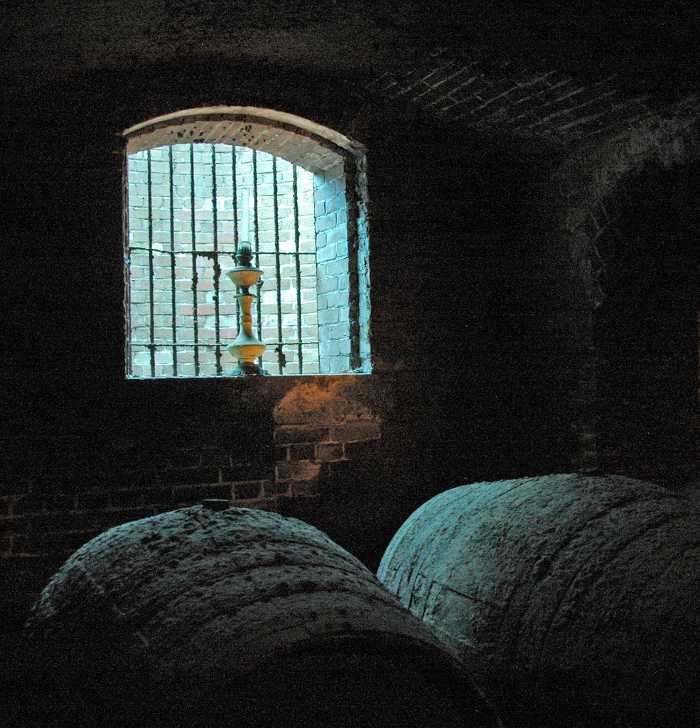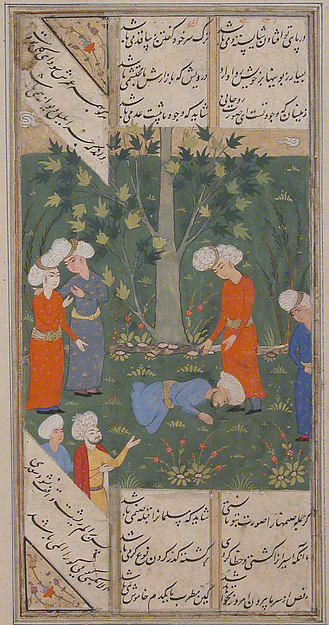FWP:
SETS == A,B; GENERATORS;
PARALLELISM
BEKHUDI: {21,6}
ISLAMIC: {10,2}
WINE: {49,1}
This is the third verse of a four-verse verse-set; for discussion see {131,6}.
Here we see two extremely parallel lines. Still, how are we to interpret their 'A,B' parallelism? Do they represent two perspectives on the same situation? Do they describe two different situations, with certain implied similarities? Or do they describe two different situations, with certain implied contrasts? As usual, Ghalib invites (and requires) us to decide for ourselves.
The first line paints a picture of what looks at first like supreme submission: for anyone's head to be on the foot of anyone (or anything) is an ultimate display of lowliness and humility. Presumably the intoxicated drinker, even as he passes into a state devoid of any sense of self, should (gratefully? humbly? prudently?) drape himself as closely as possible around the base of the wine-cask. We can imagine that it's a large still or wine-making vessel with a spigot near the bottom, so the drinker may actually be seeking to remain as close as possible to the direct source of his intoxication. Thus his gesture may be reverent, or practical, or appreciative, or merely prudent (why should anyone else have a chance to come between his unconscious self and the source of such transcendent delight?). The line also offers the enjoyably repetitive sound effects of pā and pah .
The second line prescribes the proper behavior at the time of prayer for a Muslim (since the Qiblah is first of all the Ka'bah); or perhaps more generally for anyone who worships or prays, since qiblah can also be 'any object of veneration or reverence' (see the definition above); it is used in a broad sense in {131,1}. As compared to the gesture of 'putting the face on the foot', the gesture of 'turning the face toward' is similarly expressive of reverence, but less graphic and intense. This line also provides its special sound effects in the enjoyable sequence rū sū .
But no amount of close analysis can tell us how to put the two lines together. Does one represent good behavior for a drinker, and one good behavior for a worshiper, so that the theme of the verse is that behavior should be appropriately respectful to the occasion? Is one of the lines the important one, and the other merely a parallel example or metaphor-- is the verse 'really' about intoxication, or 'really' about prayer? Is the 'selfless-ness' of an intoxicated drinker to be likened to the mood of prayer, or differentiated from it? Is one better than the other, and which is it? Do the two lines describe the behavior of one person at different times, or different sorts of persons? And so on. Not despite, but because of, the verse's extreme simplicity, it remains opaque; it refuses, and will forever refuse, to yield any single interpretation.
Compare {133,2}, which offers an amusingly 'practical' approach to the same situation.


Nazm:
[See his comments for the whole verse-set: {131,6}.]
== Nazm page 140; Nazm page 141; Nazm page 142